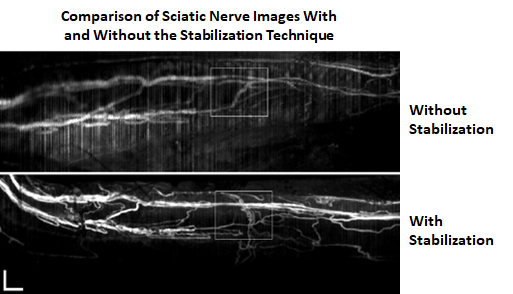
SPARC2 projects are developing next generation tools and technologies to detect and monitor nerve structure changes in real-time
Bioelectronic medicine, the use of therapeutic devices to modulate electrical activity in nerves and improve organ function, has the potential to treat a wide variety of diseases and conditions, such as heart arrhythmias, gastrointestinal disorders, and type II diabetes. The nerves that connect the brain and spinal cord to organs in the body are composed of long cable-like bundles of fibers called axons, wrapped in a supportive layer of connective tissue that contains blood vessels essential for nerve health and function. As with any therapeutic, safety is enhanced by understanding and reducing potential unintended effects, including tissue damage to stimulated nerves.
A team at SPARC awardee institution Massachusetts General Hospital, led by Dr. Benjamin Vakoc, worked with scientists in the medical device laboratories at the Food and Drug Administration (FDA) to develop a novel approach for predicting and preventing nerve injury caused by electrical stimulation in real time. In order to capture a clear image of tissue damage, they created a custom 3D-printed device to simultaneously stimulate the nerve while also stabilizing it to prevent blurry images caused by breathing and muscle movement. They used optical coherence tomography (OCT), an imaging approach that measures the quantity and direction of light deflected and reflected by tissue, to monitor blood flow and blood vessel size during electrical stimulation of the sciatic nerve. They then compared OCT observations during stimulation with established analyses of nerve function and tissue structure to correlate the changes with nerve injury. This approach points to new real-time biomarkers that could be used to calibrate bioelectronic medicine therapies in order to predict and prevent nerve injury.
Reference
- Toward optical coherence tomography angiography-based biomarkers to assess the safety of peripheral nerve electrostimulation. Vasudevan S, Vo J, Shafer B, Nam, Ahhyun S, Vakoc B, Hammer D. J Neural Eng. 2019 Jun.


